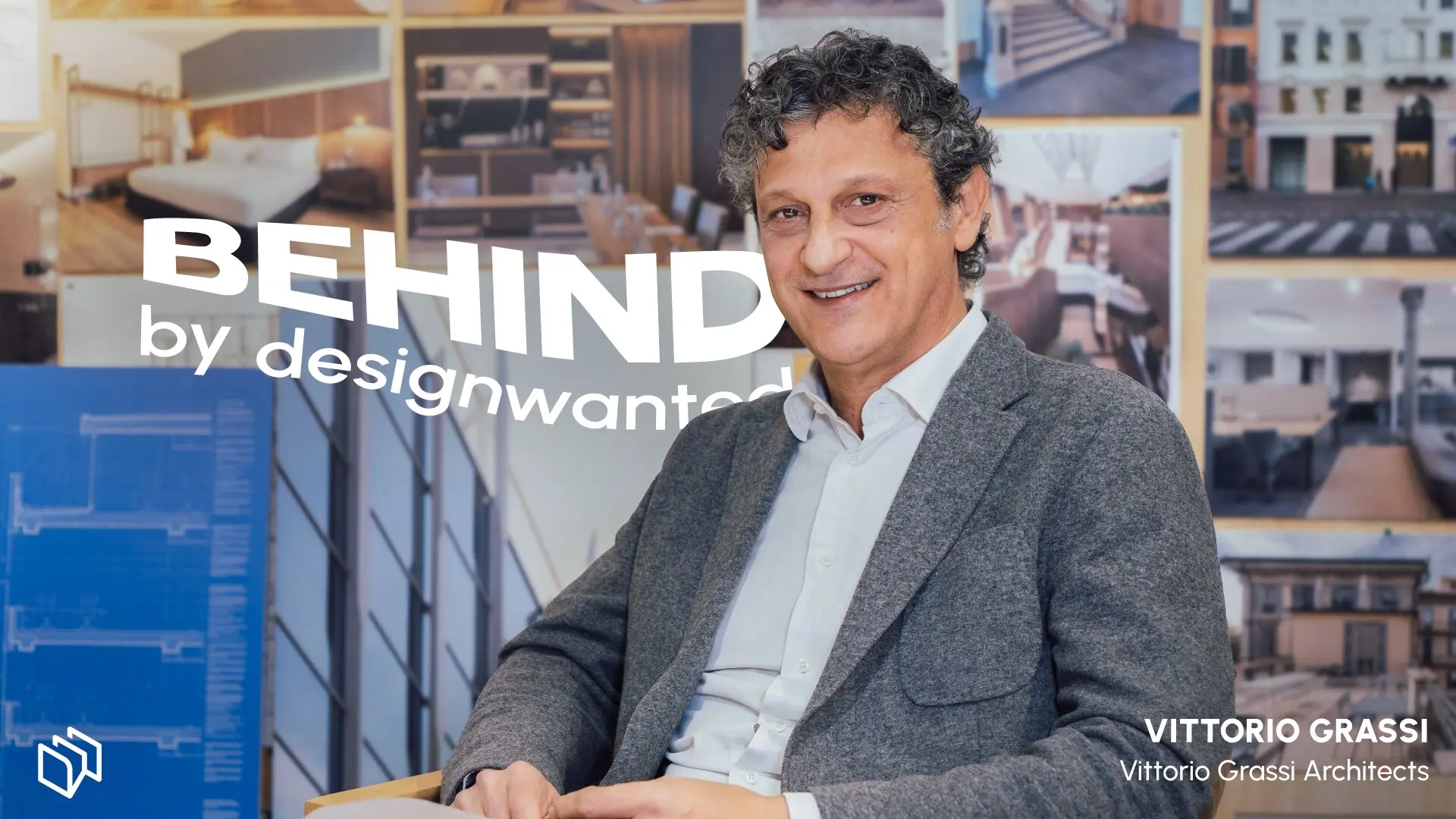
Designing curiosity: Duccio Grassi’s retail approach
Retail design is often viewed as a space to showcase products, but for Duccio Grassi, it is first and foremost a project of communication. In this episode of Behind, DesignWaned steps into Grassi’s world to explore the approach that has guided his work for over four decades.
Founded in the 1980s in Reggio Emilia, the Duccio Grassi Architects studio has built a distinctive reputation in the field of retail, while also working across architecture, interiors, and art design. A second office in Milan, opened 18 years ago, connects the studio with a broader design dialogue, both in Italy and internationally.

The shift toward retail came early in Grassi’s career. “I was fortunate to meet a fashion company from my city,” he recalls. That company was Max Mara – a brand that, at the time, had just seven stores. Today, it has over 2,500. “We grew together, and we still collaborate.” That long-term partnership shaped not only his portfolio but also his understanding of what a retail space can be.
“To me, a retail project is a communication project,” he explains. “It’s commercial, of course, but the main aspect is how the brand communicates itself.” In an age where brand identity extends far beyond products, the store becomes a space of experience, an environment that speaks directly to the customer.

This belief drives a human-centered design philosophy. “The product is important, but it’s not at the center. The person is,” Grassi says. Each project begins by imagining the type of person he wants to invite into the space. From there, the focus shifts to creating curiosity, defining sensory experiences, and encouraging movement.
“I ask myself: when they take the first step inside, what do they feel? What do they see? How can I ensure they follow the path we imagine for them?” This emphasis on spatial narrative creates stores that do more than sell: they guide, intrigue, and welcome.
Retail also offers a unique platform for experimentation. “Fashion demands constant novelty,” he says, “and that gives us the freedom to try materials and ideas that later influence interior and industrial design.” With global brands comes global reach, and Grassi sees international projects as a chance to engage with diverse mindsets. “Designing stores around the world means constantly learning from other cultures. It’s incredibly enriching.”

Despite the recognition his studio receives, Grassi insists that a well-executed retail project should not bear the designer’s signature. “The goal isn’t to show my personal style. It’s to express the brand’s character. If I’ve done that well, you shouldn’t be able to tell it’s me.”
The Max Mara store on Corso Vittorio Emanuele in Milan offers a clear example. “Thousands of people walk past it every day. We introduced a new staircase in the corner, which wasn’t there before. It functions almost like an iconic sculpture.” Its presence signals more than vertical circulation, it communicates a message.
“A passerby sees the staircase and thinks, ‘Something’s happening inside. It must be worth seeing.’ And because the staircase is so substantial, it suggests there’s an important space upstairs, not just a small annex. That curiosity draws people in.”

Once inside, the design continues to guide without overt direction. “In this store, we noticed most people naturally go up the stairs right away. Then they return to the ground floor later. That instinctive movement means the layout works, we’ve subtly shaped their path without forcing it.”
Grassi believes that after sparking curiosity and prompting entry, the next goal is to ensure people stay. “The store has to feel welcoming. It should be a space where people enjoy being.” That sense of ease is not accidental, it’s designed. In Grassi’s world, retail design is not an exercise in display but a craft of engagement. It’s about listening to the brand, imagining the person, and building environments that speak without saying a word.

His approach, shaped by decades of experience and international exposure, reminds us that good design doesn’t draw attention to itself, it draws people in. And once inside, it invites them to stay.
The original BEHIND series comes to life thanks to the invaluable support of our trusted partners:



